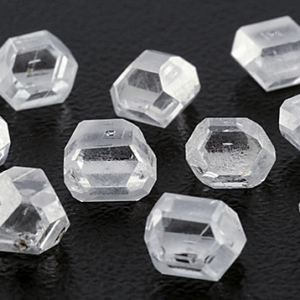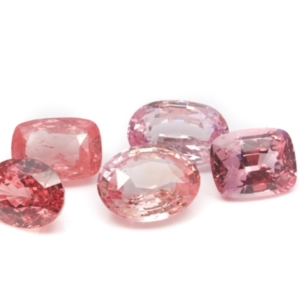Lead carbonate – properties, virtues & benefits
Cerusite stone belongs to the aragonite category. In the form of natural crystals, it possesses, like all stones, a history, an origin, a composition as well as undeniable virtues in lithotherapy.
CERUSITE CHARACTERISTICS
- Chakra: Solar Plexus.
- Properties: SPiritual growth, mental clarity, insight, intuition, emotional healing.
- Astrology: Mercury.
- Zodiac: Gemini, Virgo.
- Elements: Earth, Air.
- Colors: White, Gray, Brown.
- Hardness: 3 to 3.5 on the Mohs scale.
- Chemical Formula: PbCO3 (Lead Carbonate).
- Associated god: None.
CERUSITE STONE – ITS HISTORY
In France, Cerussite is known as Pierre Cérusite, according to the International Mineralogical Association (IMA*). In 1753, Wallerius first described it as Minera plumbi spathacea (spathic lead). Wilhelm Karl Ritter von Haidinger, an Austrian mineralogist, geologist and physicist, described it more fully in 1845 and named it after “Cerussa”, the Latin name for lead carbonate mentioned by Pliny the Elder in the 1st century AD. It belongs to the aragonite group and is naturally composed of carbon and derived from lead, as well as traces of strontium, zinc and copper in the form of straight prisms with rectangular bases. Its color depends on its lead content, ranging from rusty to white, green, yellow, grayish and metallic.
On the Mohs scale of mineral hardness, Cerusite Stone falls between 3 and 3.5, placing it among the soft to medium minerals. Although brittle, it fluoresces yellow under ultraviolet light. In ancient times, it was used as make-up to even out and whiten the complexion, in the same way as lead, desPite being highly toxic. Today, its toxic properties are well known, and its low hardness precludes its use in jewelry. However, its metallic brilliance is admired by collectors and often exhibited in museums.
.
CERUSITE STONE – ITS ORIGIN AND COMPOSITION
Cerusite Stone is a mineral that forms at low temperatures on the earth’s surface and is considered a so-called “secondary” mineralization of lead. As it comes from the oxidation of lead-bearing minerals, it is often found in large quantities near mineable lead deposits. Cerusite is created by the degradation of Galena, which can then form Anglesite, although this is not always the case, to finally become Cerusite. It belongs to the di-pyramidal crystalline class and occurs in various forms, such as polymorphic crystals of various sizes and weights, including centimetric, dicentimentric, tabular, prismatic, pseudo-hexagonal and pyramidal.
Cerusite crystals can have fascinating shapes, such as macles shaped like gigantic snowflakes or sharks’ teeth. Some heart- or V-shaped crystals are rarer and sought after by collectors. Cerusite is also found in France, notably in Ardèche, Aveyron, Corrèze and Indre at Chaillac (with rare stalactite Cerusites) as well as in Puy-de-Dôme at Pontgibaud, where the most famous of them can be found at the Roure mine.
.
Cerusite’s density is over 6.55 due to its high lead content. Although not used in jewelry due to its fragility, it can be cut into gems to offer spectacular brilliance. The stone’s color and luster depend on its composition, with a transparent, colorless stone having an adamantine luster, while a stone colored black, blue, green, yellow or red will be more or less opaque with a vitreous or resinous luster, depending on the impurities and metal oxides present.
Cerusite is a fairly common mineral with significant deposits in Morocco and Namibia, as well as on the territories of Russia and Kazakhstan. Although Cerusite cannot be used in jewelry due to its fragility, it offers spectacular brilliance when cut into high-grade gems, suitable for sale by Sotheby’s.

CERUSITE STONE – VERTIES AND PROPERTIES
Cerusite Stone containing lead is considered an anchoring stone, beneficial for people needing to work on their assertiveness. It can help overcome shyness and build confidence to anchor oneself in reality, while adding weight to convictions. It can also be useful on a daily basis, finding its place on a desk as a true anchor stone, strengthening all the chakras with a specific action on the root chakra, which connects us to the Earth and the physical world. Cerusite is also known to repel harmful energies, which can prevent nightmares by placing it on the Solar Plexus (over clothing as it contains lead) a few moments before sleep.
Psychological aspects of cerussitis
.
Cerusite, a high-density stone containing lead, can help overcome inhibitions and take one’s place, making it a useful stone for changes aimed at improving destiny. It can also have a positive influence on the mind, helPing one to feel at ease and well integrated in the places where it is placed, even in places where one has just moved in. Cerusite’s optical qualities and lovely reflections also make it an ideal choice for meditation and visualization, offering a beneficial bath of light.
As with any crystal, the presence of Cerusite can purify its surroundings and bring beneficial vibrations on a sPiritual level. In addition, this stone could facilitate cash inflows and help establish financial stability due to its proximity to lead and silver mines, where it is often found. This story is well known to smelters of ancient times.
PHYSICAL CASTING
Cerusite Stone is linked to the first chakra, strengthening the root chakra which governs physical energy and can bring its strength to the other chakras. It is considered a stone of vitality, with a beneficial action on the nervous system, helPing to avoid jerks and involuntary movements. Cerusite is also known to stimulate energy in a positive way. This is partly due to its nature as a metallic mineral, which makes it a good conductor of heat and electricity.

CERUSITE STONE – CLEAN AND RECHARGE
To clean and recharge cerussite stone, here are some common methods:
Cleaning:
- Distilled water: Gently rinse the stone with distilled water for a few minutes.
- Fumigation: pass the stone over the smoke of sage incense, palo santo or copal.
- Earth: Bury the stone in a bowl of earth for 24 hours.
Loading:
- Sunlight: Place the cerussite stone in the sun for a few hours, but be careful not to expose it for too long, as it may discolor.
- Moonlight: Place the stone under the light of a full moon for a whole night.
- Rock crystal: Place the cerusite stone on a cluster of rock crystal to recharge it with energy.
It’s important to note that cerusite stone is quite fragile and can dissolve in acidic solutions, so it’s recommended to avoid the use of aggressive cleaning methods.
WHERE DOES THE NAME CERUSITE COME FROM?
The name “cerussite” comes from the Latin “cerussa”, meaning “lead white”. The name refers to the characteristic white or grayish color of cerussite stone, as well as its main composition, which is lead carbonate. Cerusite was first described in 1772 by the German mineralogist François S. Beudant.
WHICH CHAKRA DOES CERUSITE ACT ON?
Cerusite stone is associated mainly with the solar plexus chakra, which is located at stomach level and is linked to self-confidence, self-esteem, willpower, digestion and transformation. Cerussite is said to stimulate the energy of this chakra, promoting sPiritual growth, mental clarity and emotional healing. It can also act on the throat chakra, helPing to improve communication and express thoughts and feelings with confidence and clarity.
WHICH ASTROLOGICAL SIGN IS ASSOCIATED WITH CERUSITE?
Cerusite stone is associated with the astrological signs Gemini and Virgo, both of which are ruled by the planet Mercury. Cerusite is believed to enhance the positive qualities of these signs, including communication, intellect, curiosity, flexibility, precision and adaptability.
CERUSITE STONE SUMMARY
Cerusite is a mineral that occurs as white or colorless crystals. Its chemical composition is mainly lead carbonate, and it often forms in lead ore veins.
Cerusite is used in industry to produce lead, paints, batteries and other products. It is also used in jewelry as a fine stone.
However, cerussite can be toxic if inhaled or ingested, as it contains lead, which is a harmful element for human health. Therefore, it is important to handle cerussite with care and store it under appropriate conditions to avoid unnecessary exposure.

